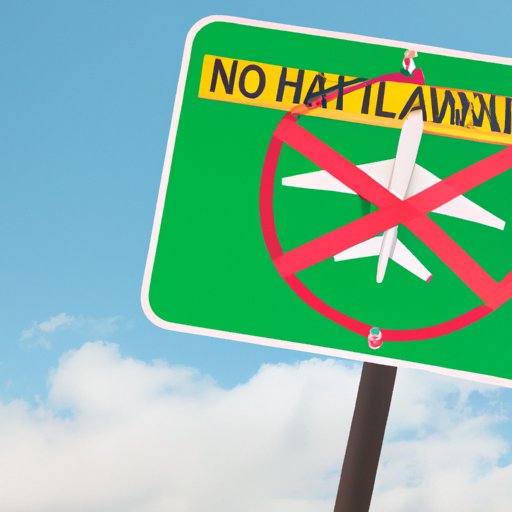Introduction
If you’re thinking about traveling to Hawaii during the COVID-19 pandemic, it’s important to understand the state’s travel restrictions. Hawaii has implemented a pre-travel testing program to help prevent the spread of COVID-19 among visitors and residents. This article aims to provide a comprehensive guide to navigating Hawaii’s travel restrictions, including details about the pre-travel testing program and quarantine policy, tips for planning your trip, and information about what you can and can’t do on your island vacation.
Understanding Hawaii’s Travel Restrictions
To enter Hawaii without a 14-day quarantine, travelers must obtain a negative COVID-19 test result from an approved testing partner before their departure. Here’s what you need to know about the pre-travel testing program:
All travelers, including children over the age of five, must take a COVID-19 test from an approved testing partner within 72 hours of their scheduled departure time from the final leg of their trip to Hawaii.
The test must be a nucleic acid amplification test (NAAT) from a Clinical Laboratory Improvement Amendments (CLIA) certified laboratory or by an approved Hawaii State Department of Health testing partner. Antigen tests and antibody tests will not be accepted.
Travelers must also create an account on the Hawaii Safe Travels website and complete a travel and health questionnaire within 24 hours of their departure to Hawaii.
Those who do not obtain a negative test result prior to departure will be subject to a mandatory 14-day quarantine upon arrival in Hawaii.
Planning Your Trip to Hawaii
Planning a trip to Hawaii during the pandemic requires careful pre-planning and additional considerations. Here are some steps to follow for a successful trip:
Step 1: Research and make travel arrangements early. Booking your flight and accommodations as early as possible increases your chances of securing the best prices and options.
Step 2: Research and book a COVID-19 test through an approved testing partner. Be sure to confirm the test’s turnaround time and the possibility of incurring an additional fee.
Step 3: Prepare for potential quarantine measures. If you do not obtain a negative test result prior to your travel, you will need to plan to quarantine for 14 days. Research accommodations that offer extended stays and have features such as kitchenettes and on-site laundry facilities.
Step 4: Consider transportation options. Many travelers prefer to rent a car for their stay in Hawaii to explore the islands, but be sure to research rental car availability and prices beforehand. Taxis, Uber, and Lyft are also available, but they may be more expensive than renting a car.
What You Can and Can’t Do on Your Island Vacation
Hawaii currently has restrictions on gatherings, businesses, and activities—so you will need to plan your itinerary carefully. Here’s what you need to know:
Gatherings: Social gatherings are limited to no more than 10 people indoors and 25 people outdoors on most of the islands. Oahu has additional restrictions that prohibit social gatherings of any size.
Attractions and Activities: Many tourist attractions, such as Pearl Harbor and the USS Arizona Memorial, are open to visitors with limited capacity. Outdoor activities such as hiking and beach activities are also available, but with restrictions on group size and mask requirements. Indoor activities such as museums and movie theaters may have limited hours or remain closed.
Restaurants: Restaurants are open with limited capacity, and reservations are recommended. Some establishments may offer takeout or delivery options as well.
Insider’s Guide to Hawaii’s Travel Restrictions
Here are answers to some frequently asked questions about Hawaii’s travel restrictions:
Q: What happens if my pre-travel test results are not available before I depart for Hawaii?
A: If you do not have your negative test results before boarding your flight, or the results are inconclusive, you must quarantine for 14 days or until you have negative test results.
Q: What happens if I test positive for COVID-19 before I depart for Hawaii?
A: If you test positive before departure, you must stay home, isolate, and delay your travel until recovered or cleared for travel by a healthcare provider.
Q: How do I stay up to date on Hawaii’s travel restrictions and guidelines?
A: Check the state’s official tourism website regularly for updates on guidelines, restrictions, and travel-related news.
Conclusion
Traveling to Hawaii during the COVID-19 pandemic requires additional research, preparation, and flexibility. Understanding the state’s pre-travel testing program and quarantine policy will be critical to ensuring a safe and enjoyable trip. By planning ahead, researching your options, and following guidelines and recommendations, you can make the most of your Hawaii vacation while staying healthy and responsible.
(Note: Is this article not meeting your expectations? Do you have knowledge or insights to share? Unlock new opportunities and expand your reach by joining our authors team. Click Registration to join us and share your expertise with our readers.)
